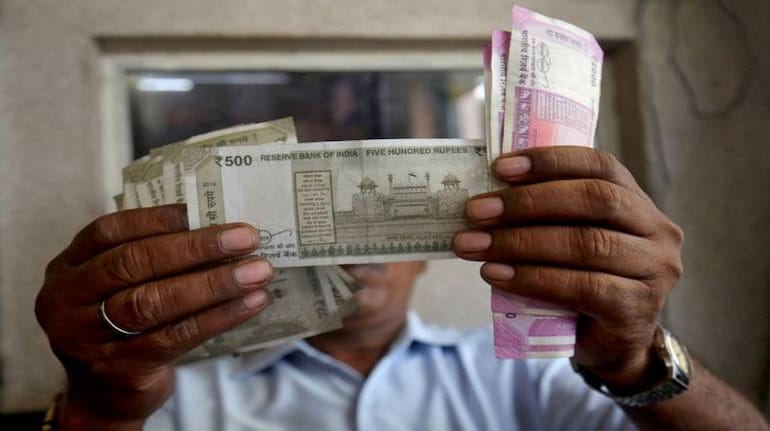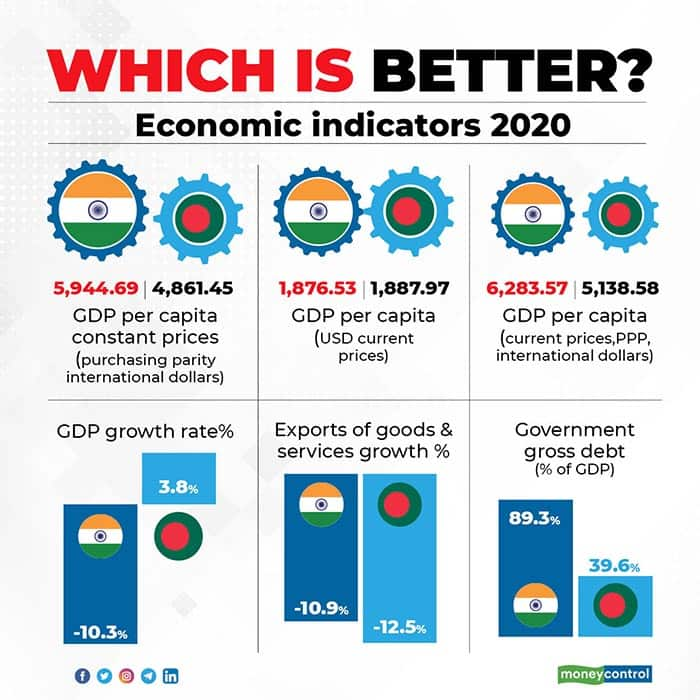



Much ado is being made about the International Monetary Fund’s estimate showing that Bangladesh will overtake India in per capita income, measured in US dollars at current prices, this year. This is just political hype. Her is why:
1) If we take the IMF’s figures for gross domestic product per capita at constant prices, measured by purchasing power parity using 2017 international dollars, then Bangladesh’s per capita income in 2020 is 83 percent of India’s.
2) If we take the IMF numbers for gross domestic product per capita at current prices, measured using purchasing power parity in international dollars, then Bangladesh’s per capita income in 2020 is 81.8 percent of India’s. It is the purchasing power parity measure that is the best way to compare standards of living between different countries.
3) Even if we take the yardstick of per capita income in US dollars at current prices, it is only in 2020 that Bangladesh’s per capita income is above India’s. Thereafter, according to the IMF projections, India’s per capita income will again be higher than Bangladesh's till 2024 and 2025, when the tables will be turned once again. The IMF can scarcely get the current year’s forecast right and its projections further ahead need to be taken with large doses of salt.
4) Is Bangladesh closing the gap with India? It is true that in recent years, especially since 2017, Bangladesh’s GDP growth rate has been higher than India’s. Indeed, if we take per capita income in US dollars at current prices, then Bangladesh’s compound annual growth rate (CAGR) between 2009 and 2019 is 10.23 percent, compared to India’s 6.46 percent, taking IMF numbers.
But if we go back to the year 2000, we find that Bangladesh’s per capita income at current prices in USD was 91 percent of India’s while it was 86.6 percent in 2019. So over the longer period, it is India that has outperformed. Much depends on the starting date.
5) We have heard a lot about Bangladesh becoming an export powerhouse. But here’s what the World Bank data say: in 2019, exports of goods and services amounted to 15.3 percent of GDP for Bangladesh and 18.7 percent of GDP for India. Both countries have seen their exports/GDP percentage decline: in 2012, it was 24.5 percent for India and 20.2 percent for Bangladesh. And Bangladesh is a small country, without a large internal market.
6) The Bangladesh government’s revenues, as a proportion of GDP, was a mere 9.7 percent in 2019—compare that to India’s 19.3 percent, despite 2019-20 being a bad year. But the Bangladesh government’s expenditure too is very low, which is why it is fiscal deficit and government debt is much lower than India’s.

It is actually in the social indicators that Bangladesh does better than India. Life expectancy in Bangladesh, for instance, is 72 years compared to India’s 69. Bangladesh’s under-5 child mortality rate and neonatal mortality rate are lower than India’s, although India does better on maternal mortality.
The proportion of the under-nourished population in Bangladesh is marginally better than India’s. Its female labour force participation rate is much higher than India’s. For India, it makes much more sense to learn from Bangladesh’s improvement in social indicators than it does to look at their economic indicators.
Of course, if you are really desperate to show how some of its peers have done better than India, perhaps you should consider Vietnam. In 2000, India’s per capita income in current US dollars was 90.5 percent of Vietnam’s. In 2019, it was 61.4 percent.
(Do write in with your views on the Bangladesh-India per capita income comparison to Manas.Chakravarty@nw18.com)
Discover the latest Business News, Sensex, and Nifty updates. Obtain Personal Finance insights, tax queries, and expert opinions on Moneycontrol or download the Moneycontrol App to stay updated!
Find the best of Al News in one place, specially curated for you every weekend.
Stay on top of the latest tech trends and biggest startup news.